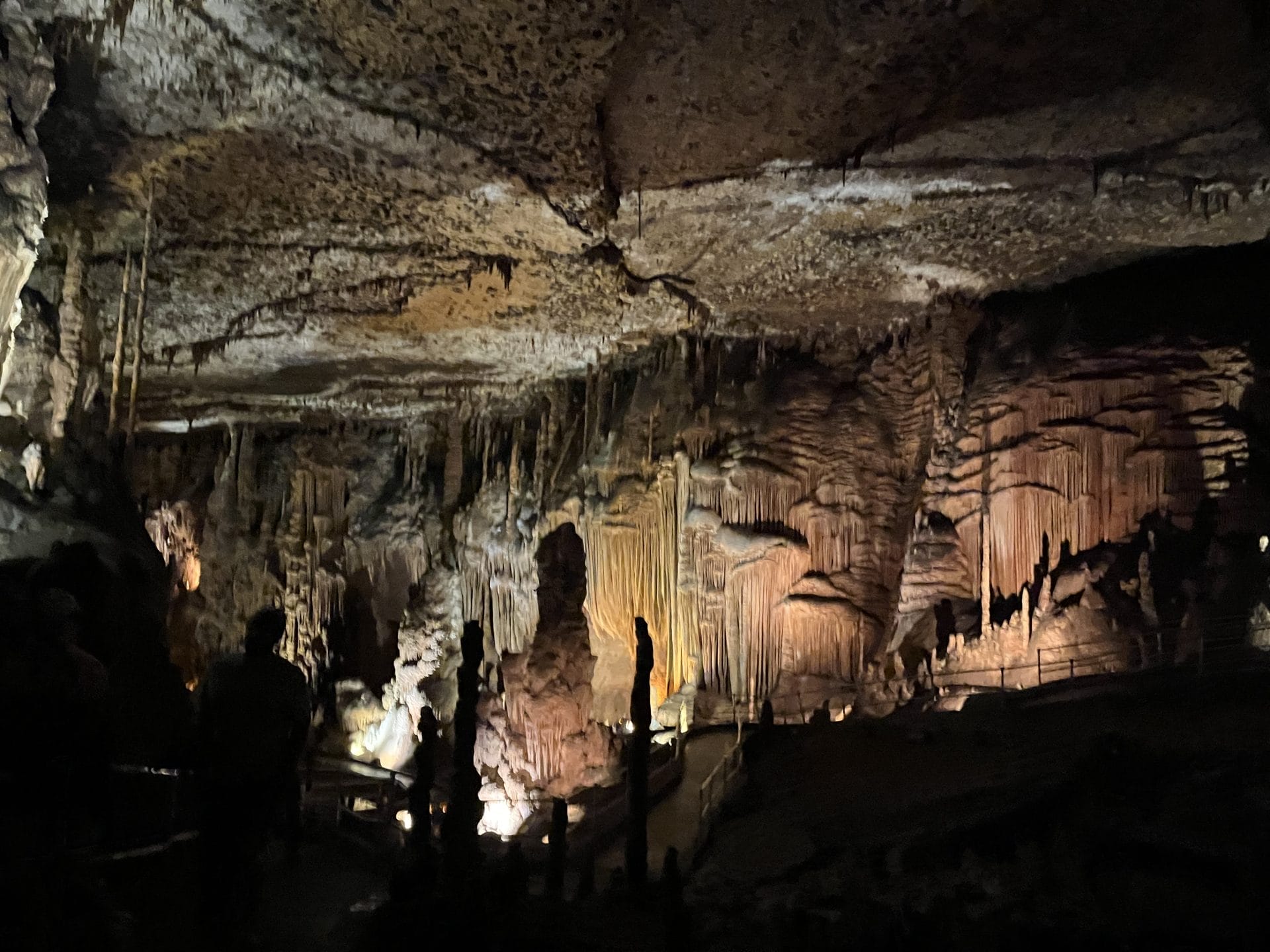

Uh oh...
It appears that you're using a severely outdated version of Safari on Windows. Many features won't work correctly, and functionality can't be guaranteed. Please try viewing this website in Edge, Mozilla, Chrome, or another modern browser. Sorry for any inconvenience this may have caused!
Read More about this safari issue.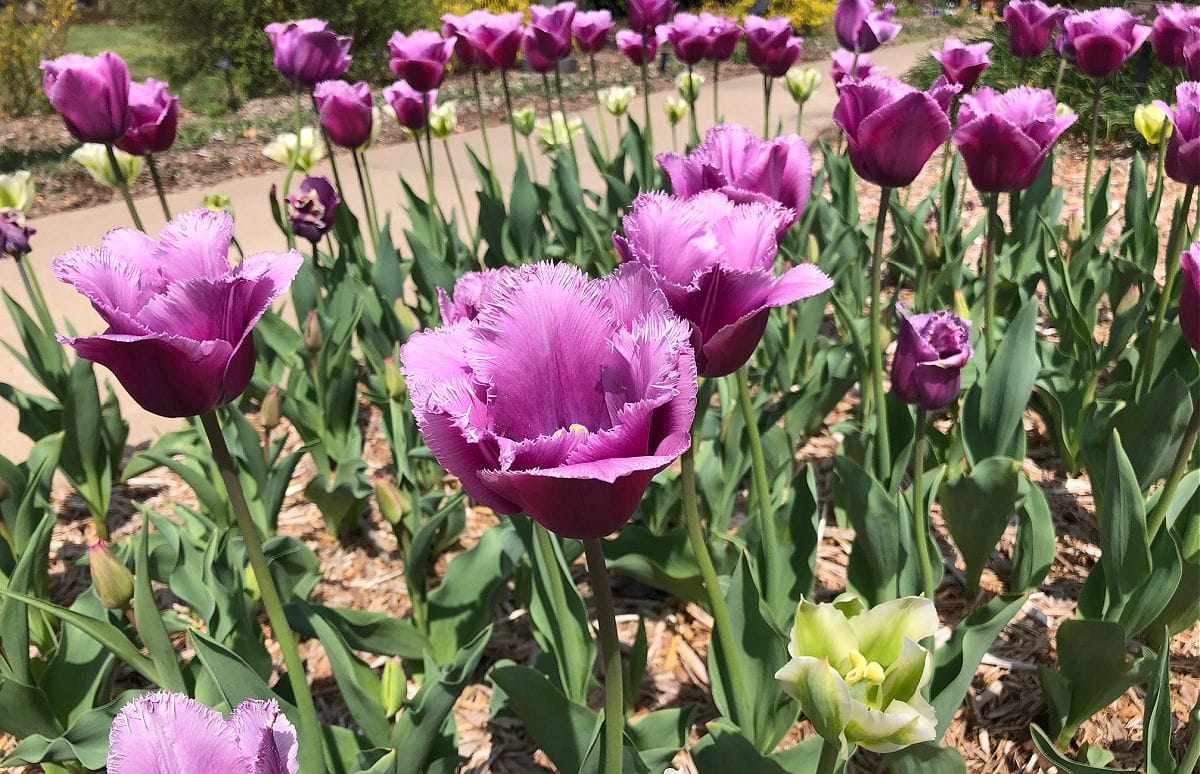

With fall just around the corner, now is the time to think about planting bulbs for spring blooms. Next winter, when your neighbor’s daffodils begin pushing up from the frosty earth and spring fever hits like sugar in the veins, it will be too late to add them to your landscape.
Procrastinators, let this be a gentle reminder. Unlike many annuals and perennials that can be purchased at your local nursery on a whim and in-season, plants that grow from bulbs (including corms, tubers, and rhizomes) take a bit of advanced planning.
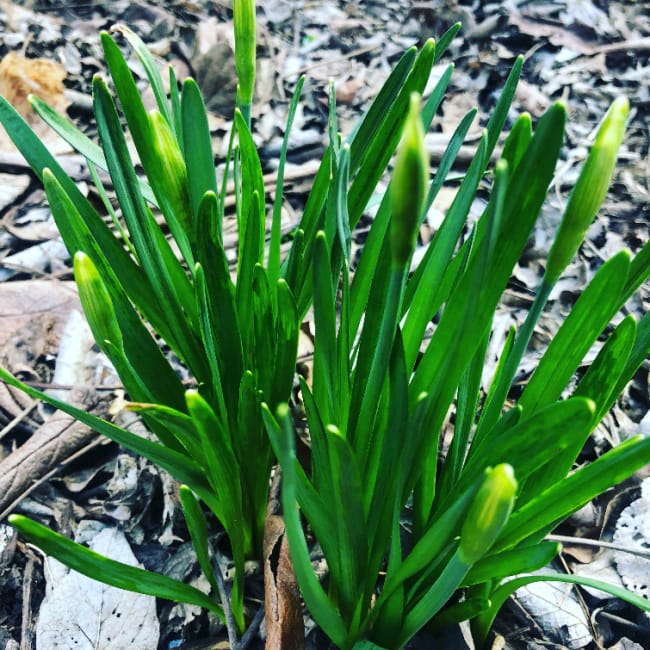
The planning starts now.
What is a bulb?
A bulb is a storage organ for specific plants that lie dormant during winter.
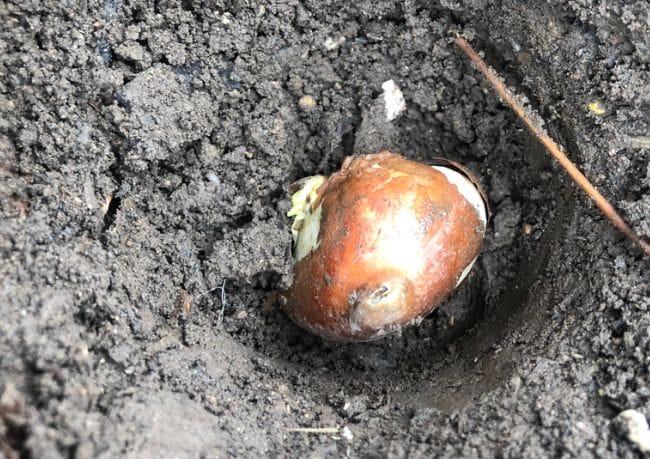
Within the bulb, a plant has all the food reserves it needs to grow and flourish—the roots, stem, leaves, and flowers. Think of a bulb as a potent package of flower power. Although you may have already begun dreaming of The Great Pumpkin, when spring rolls around, you’ll be craving fresh blossoms that only bulbs can provide.
Hardy or Tender?
There are two types of bulbs—spring and summer bulbs. Spring bulbs are planted in fall. This variety is considered hardy because they need the cold winter temperatures to wake from dormancy. Summer bulbs, which are planted in spring, are considered tender because most can’t survive freezing temperatures.

The bulbs we will be planting this fall are hardy bulbs. Favorite hardy bulbs include tulips, iris, daffodils, hyacinth, allium, and crocus. (We will discuss summer bulbs another time.)
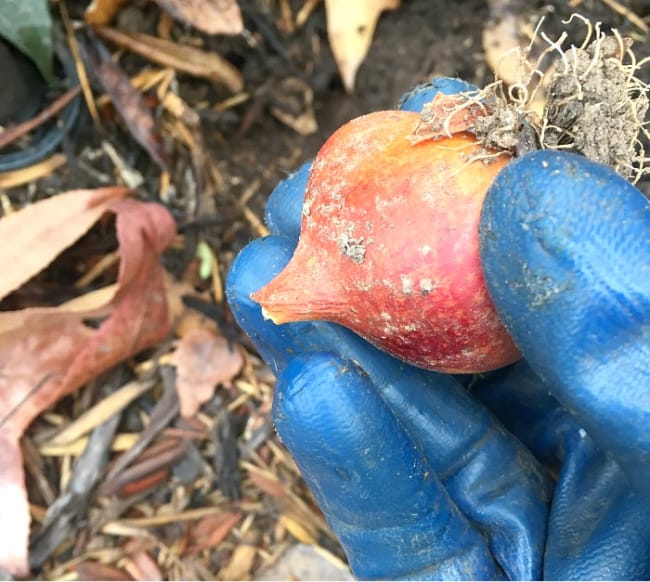
Bulb Selection
Just as you inspect apples and tomatoes at the grocery store, you should take care when buying bulbs, too. While it may not always be possible to visually inspect bulbs due to packaging or mail-order, these guidelines will help you select the best bulbs for your hard-earned bucks:
- Look for large, firm bulbs that are unblemished. Remember, the larger the bulb, the larger the bloom.
- Buy from a reputable nursery or garden center, whether in-person or on-line.
- Consider planting several varieties with different bloom times. This will add interest and color to your garden.
When to Plant
- A good rule of thumb is to plant when average nighttime temperatures range from 40 to 50 degrees. The bulbs need to experience a three to four-month chilling process to develop a robust root system and long-lasting blossoms.
- If you live in North or Central Arkansas (Zones 6a, 6b, 7a, or parts of 7b), plant from mid-September through the end of October. If you live in South Arkansas (parts of Zone 7b or 8a), plant in early November through mid-December. You can often plant later into winter, but the flower stems and blossoms may not develop fully.
- If you purchase bulbs and can’t plant for several weeks, store them in a cool, dry place. The crisper drawer of your refrigerator is ideal, but don’t store bulbs with fresh fruits and vegetables. Fruits and vegetables release ethylene gas as they ripen. This will stunt the bloom of your bulb.
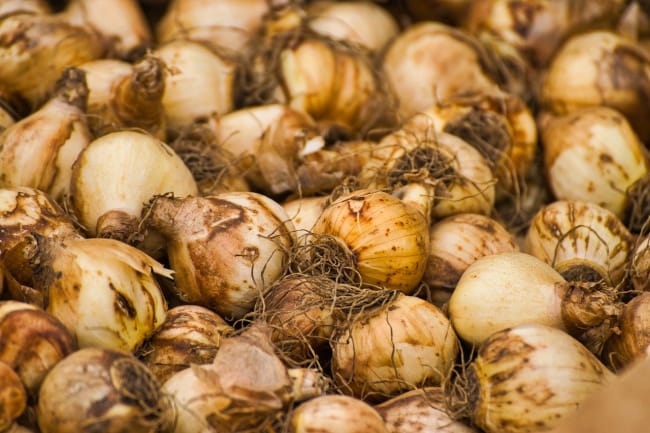
How-To: Planting Bulbs
- More is more when it comes to planting bulbs. For maximum impact, plant large groups of bulbs rather than a single, static row. A bright swath of fuchsia tulips or yellow daffodils will result in a more naturalized garden appearance.
- Plant before the ground freezes in a sunny, well-drained location.
- Your blossoms will last longer if you plant in an area protected from the wind.
- Plant with the crown (pointy end) up.
- Often when you buy a package of bulbs, planting depth guidelines will be included. As a general rule of thumb, plant the bulb at a depth of 3x the bulb size. For example, if your bulb is one-inch in size, plant three-inches deep. If your bulb is two inches in size, plant six-inches deep.
- Plant bulbs approximately 4-6 inches apart, depending on the plant’s size.
- You can purchase a bulb planter to aid in digging holes, but special equipment isn’t necessary. A regular garden spade will do the trick.
- Work compost into your soil before planting.
- Some gardeners add bone meal to the soil before planting, but I’ve found that bone meal attracts a variety of hungry critters. If rodents are a big problem in your area, you might substitute a synthetic bone meal substitute instead. Also, covering your freshly planted area with chicken wire will add extra protection. Remove the chicken wire when the stems emerge.
- Water your bulb bed once a week if your area is dry.
Layered Planting
A fun and efficient way to add color and variety to your garden throughout spring is to layer your bed planting with early, mid, and late-blooming bulbs. This method, sometimes called lasagna planting, ensures you will have blooms throughout spring.
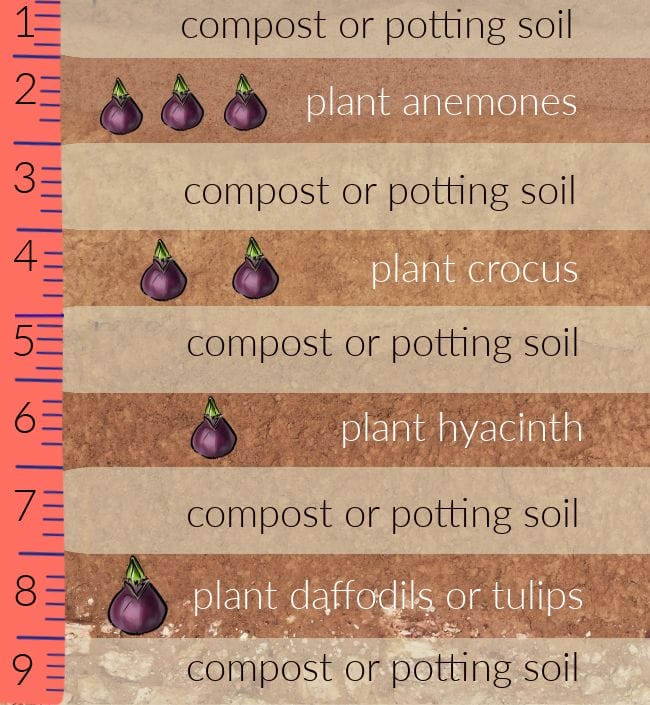
To do this, dig your bed approximately nine inches deep. Add a layer of compost or potting soil. Plant bulbs that require deep planting, such as daffodil and/or tulips. Add another layer of soil. Plant hyacinth bulbs (or similar) at 6-inch depth. Add another layer of soil. Plant crocus bulbs (or similar) at a 4-inch depth. Add another layer of soil. Plant anemones or other bulbs that prefer shallow planting at a 2-inch depth. Add soil and top dress with pansies or other fall annuals, along with a layer of mulch. This method works well in a large pot, too.
After Blooming

After a successful spring blooming season, your inclination may be to trim away all the tired foliage and toss everything in the compost. But don’t! The final step when planting and growing bulbs is to not fuss over them at season’s end. Follow these steps, and you will enjoy spring blooms for years to come:
- Deadhead the blooms once they are spent, but leave the stems and foliage for six to eight weeks until they shrivel and turn yellow. Why? Because the bulbs are still feeding. And they need nutrition to grow larger for next season. Think of the stems and foliage as drinking straws that deliver sunshine straight to the bulb.
- Avoid tying or braiding the wilting foliage. Like a knot in a water hose, braiding can hinder bulb growth.
- Give your bulbs a boost for next year with a 20-20-20 fertilizer.
With the exception of tulips, most hardy spring bulbs will multiply and grow larger each year. Tulips may come back for several years in Arkansas, but when it happens, I consider it to be a welcomed garden surprise. For the most part, it’s best to treat tulips as annuals in Arkansas and add new bulbs to your garden each fall.
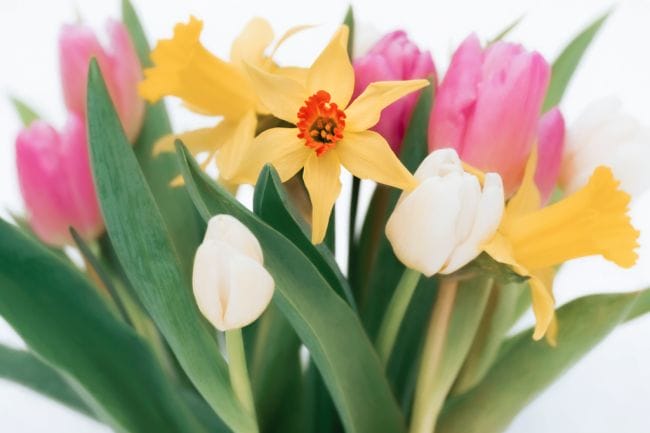
Even though fall is my favorite season, I always find the end of summer to be bittersweet. And for me, planting bulbs for spring blooms is like planting hope. This year, in particular, I need extra hope. Yes, I’ll be planting extra bulbs.
What about you? What bulbs will you be planting this fall in your Arkansas garden?
We do the work.
You check your email.
Sign up for our weekly e-news.
Get stories sent straight to your inbox!






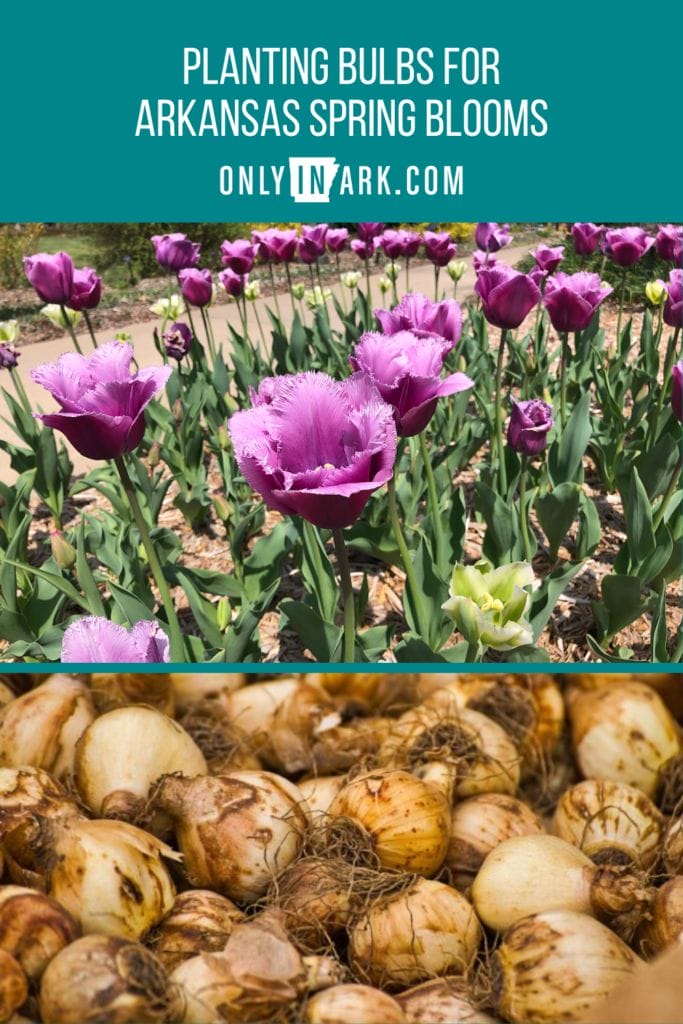



Like this story? Read more from Talya Tate Boerner
Do you set resolutions in January? For me, the beginning of a new year...
I always equate dragonflies to carefree summer days. My sister and I...
This spring, as you plan your Arkansas garden, why not plan for...
Join the Conversation
Leave a Comment